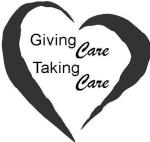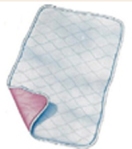
If you’re among the millions of women who suffer from urinary incontinence, losing weight might just ease your symptoms, a new study suggests.
Published in the Jan. 29 issue of the New England Journal of Medicine, the study found that when women lost about 8 percent of their body weight — an average of 17 pounds for this group — the frequency of incontinence episodes dropped by almost half.
“Weight is one of the biggest risk factors for developing incontinence and for worsening incontinence,” said study author Dr. Leslee Subak, an associate professor in the departments of obstetrics, gynecology, reproductive sciences, urology and epidemiology and biostatistics at the University of California, San Francisco.
More than 13 million American women have urinary incontinence problems, according to background information in the study. Observational studies have found an association between extra weight and incontinence, and other research has suggested that losing weight might be beneficial for relieving incontinence symptoms.
To confirm these findings, Subak and her colleagues recruited 338 women from Rhode Island and Alabama. The women had to be at least 30, with a body-mass index (BMI) between 25 and 50. A BMI over 25 is considered overweight and over 30 is obese, according to the National Institutes of Health. All of the women experienced at least 10 incontinence episodes in a seven-day period.
Two-thirds of the women were randomly assigned to the intervention group, which included diet, exercise and behavior modification, while the remaining one-third (the control group) received four educational sessions about weight loss, healthful eating and physical activity. All of the women received a self-help booklet with tips for improving their urinary incontinence.
The intervention group met for one hour every week for six months and were put on a structured protocol, including diet and exercise, designed to help them lose between 7 percent and 9 percent of their starting weight.
On average, the intervention group lost 8 percent of their body weight, or about 17 pounds each. The control group lost 1.6 percent of their body weight, or a little more than 3 pounds each.
After six months, the weekly number of incontinence episodes dropped by 47 percent for those in the intervention group compared to 28 percent in the control group. The intervention group also reported fewer episodes of stress incontinence — that’s incontinence that occurs due to extra pressure from laughing, coughing or sneezing. This group did not see improvement in urge incontinence — that’s the feeling of a sudden need to urinate.
“The reduced pressure from weight loss causes reduced pressure on the bladder,” Subak explained.
She said these findings confirm that weight loss can be considered a first-line treatment for women with incontinence.
“The weight we carry around affects our bodies in so many different ways,” said Dr. Janet Tomezsko, chief of the section of urogynecology at Northwestern Memorial Hospital in Chicago. “And, the more overweight you are, the more you have to lose to make an impact, but you can make an impact. It’s not an easy thing to do, but I think we’re going to see more and more programs that address weight loss, exercise and pelvic health.”
Article courtesy of Serena Gordon.




